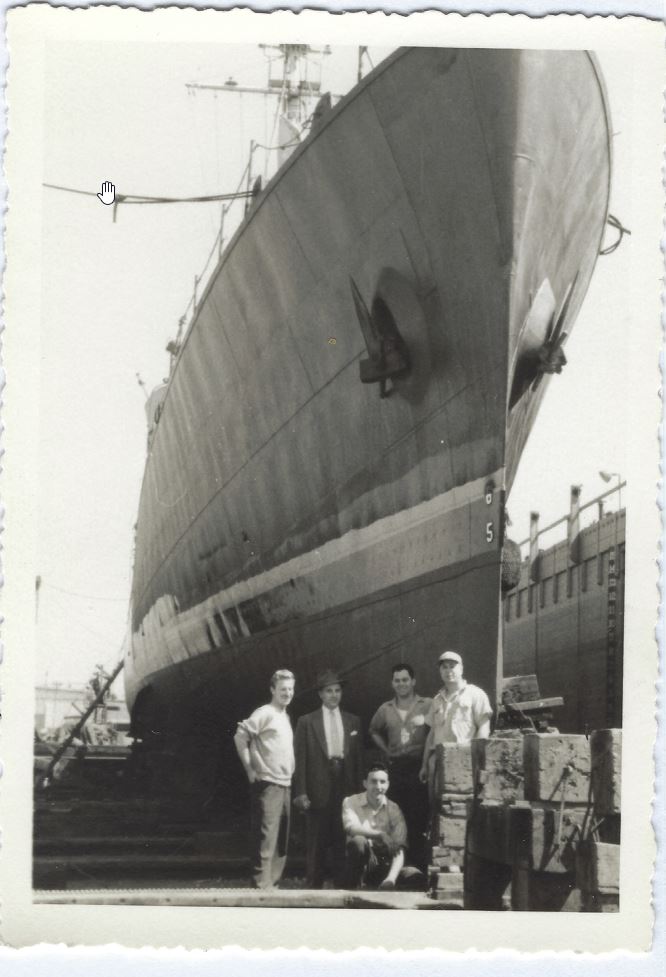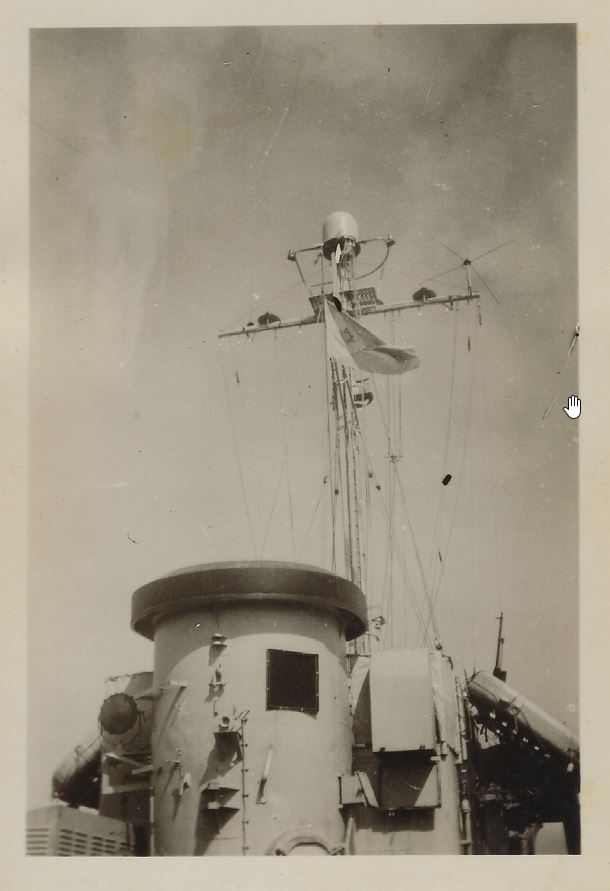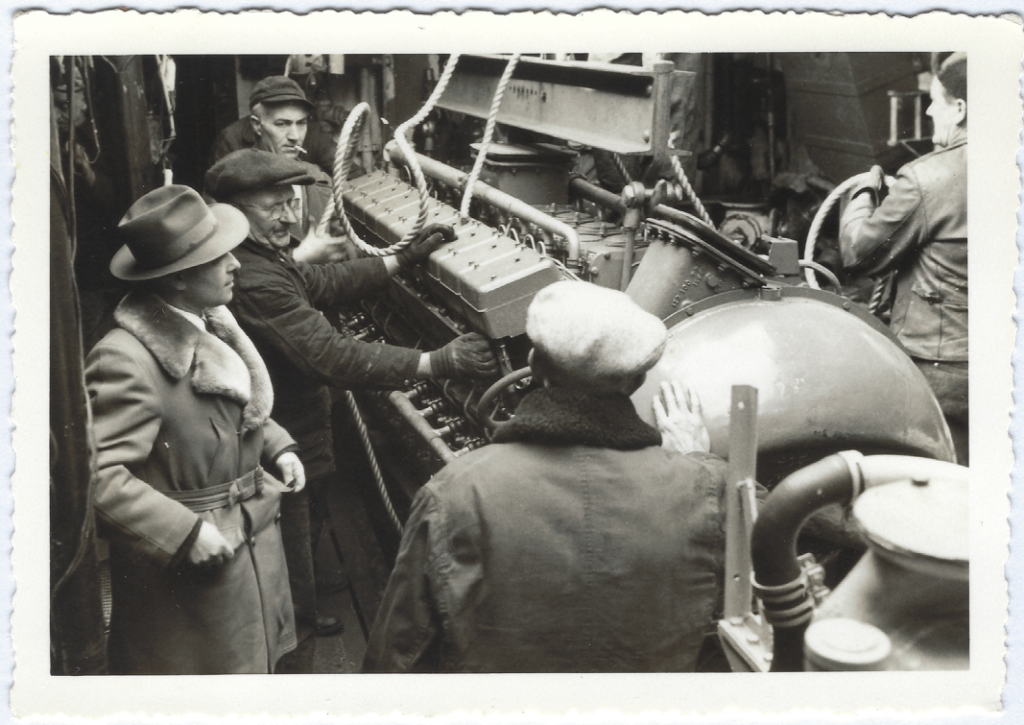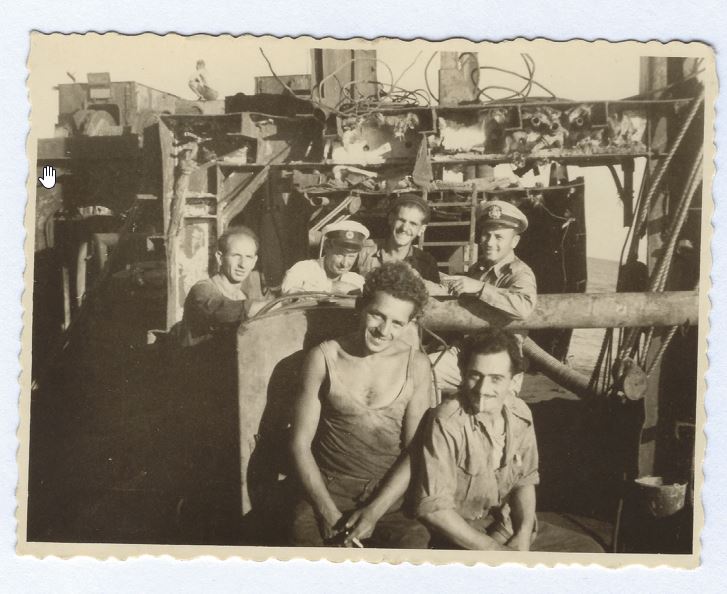Editor: in June 2022 we received many photos and records from Barry Halpern whose father the late, US Naval Reserve Commander Benjamin Halpern was a member of the Aliya Bet and Machal. Several of these are added to this page below. See also separate page on the Yucatan later renamed Noga.
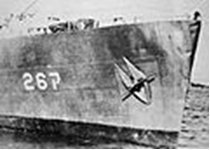
In 1945 I was a Habonim graduate from Winnipeg at hachshara in Smithville, Ontario. Several of us were working there for the Haganah, shipping Sten gun parts to Israel. Some of us spent a weekend in jail when the Royal Canadian Mounted Police became curious about what we were doing with a barn full of machine gun parts!
In New York we were collecting guns and gunpowder to be sent to Israel. The Haganah had bought a canning factory and was loading the canning vats full of guns and ammunition.
I was supposed to leave with my garin to go to Kibbutz Ramat Yochanan, preparatory to starting our own kibbutz. Instead, I was told to go home and say goodbye to my folks and then fly to New Orleans. “The Boys” had a job for me to do.
In New Orleans I was taken to a dock where there were beautiful, huge navy ships sitting, and I was dumbfounded that we might be taking one of these to Israel. Then, as we got to the edge of the dock, we looked down and there was a small, slim, ragged-looking boat that seemed the size of a rowboat. This was to be our home for the next three months, from July to September 1948, when we finally reached Israel.
The boat was christened the “Yucatan” and a Panamanian flag was run up to attempt to hide its real destination and purpose. It has been mothballed for several years and was not in a good condition. Several times as we were “boxing the compass” (turning the boat 360º to check the accuracy of the compass) our engines failed and we had to hoist two large black balls to indicate that we were out of control. Once we bumped into a large U.S. Navy ship. I wondered what they thought as they looked down at this motley crew of Israelis and college students.
From New Orleans we finally made our way down the river to the Gulf of Mexico and to Vera Cruz, where we were to load up for our trip across the Atlantic. We were only there a few days when we heard that another of our ships loaded with supplies had been seized in Tampico. We ran around the bars and whorehouses rounding up our crew, and were able to flee before we were seized. From Vera Cruz we went to Havana, where we spent a wonderful couple of weeks loading up with diesel oil, armor plate and food, and visiting the local Jewish community.
Almost all the professional sailors on the Yucatan demanded to be flown home. They claimed we could not possibly make it across the Atlantic in that ship. It was designed to carry fuel and ammunition in the hold as ballast, so that it would not capsize. But we had almost nothing in the hold, and our decks were loaded with barrels of diesel fuel covered with planks and ropes, enabling us to use the tops of the barrels as our deck. The professional sailors said that the moment we hit rough weather we would turn turtle and go upside down because of all the weight on top.
So here we are, slipping past Miami, wondering if we should be there instead of perhaps going to our doom in this oversized rowboat. Fortunately there were no storms on the Atlantic, but we did have a problem with one of the engines losing oil, so we put into Lisbon to try to buy oil. Apparently the British were keeping track of us, and we weren’t able to purchase what we needed, so we decided to go on to Marseilles for repairs.
On the way from Lisbon to Marseilles we went through a terrible storm in the Gulf of Lyon. The waves were so high we would slide down the back of a wave, be completely covered, bob up on the next one, then slide down again, hour after hour. If even one wave had hit us sideways, we would have turned over instantly. As it happened, it was my turn to steer during the storm and the captain and chief engineer stayed up top with me. I think they were ready to jump if we began to turn over. At times, the inclinometer said we were occasionally tipping as much as 40 degrees.
We finally reached Marseilles, stayed there several weeks in dry dock for repairs, and then went on to Palestine.
When we arrived off the coast of Israel, there was a U.N. truce and no weapons, ships or other war material were allowed to be brought in. Our crew went over the side, painted over the “Yucatan,” “K-26,” pulled down the Panamanian flag and pulled up an Israeli flag. Then we reported to the U.N. warships that we were “The K-26 coming in from patrolling the coast.” It was one of the most thrilling moments of my life!
After we arrived in Haifa, I left the ship, rejoined my garin at Ramat Yochanan, and went off to a deserted British military barracks to begin building our kibbutz, Kibbutz Gesher Haziv.
Additional researched historical facts:
July 1948 – Under repair at Todd’s Shipyard in New Orleans, Louisiana
6th July 1948 – Arrived in port of Vera Cruz, Mexico
29th September 1948 – Arrived in port of Haifa.
31st September 1948 – Turned over to Israel Navy and became “Noga K-16”.
19th October 1948 – “Haganah/K20”, “Wedgwood/K-18”, “Maoz/K-24” and
“Noga/K-26” engaged an Egyptian corvette and three Egyptian Spitfires. Downed one of the Spitfires and damaged a Corvette, which escaped back to its base at Port Said
22nd October 1948 – The same four warships encountered the Egyptian Navy flagship “King Farouq.” The “King Farouq” was sunk and an Egyptian minesweeper was damaged.
1949 – Although the “K-266” was in good operating condition at that time, it came to a standstill and never sailed again on its own power due to lack of competent engineering officers remaining on board.
Eventually the “K-26” became a hotel service and electric power supply mother-ship for the small fleet of ships at the naval southern section of the breakwater within the port area of Haifa.
Years later, when the steel hull of the “K-26” deteriorated, it was used for torpedo target practice and was sunk. It ended up at the bottom of the Mediterranean Sea near the Israeli coastline.
Source: American Veterans of Israel Newsletter: November 1993
Written by Jack Fox, U.S. Machalnik and researched by Joe Woolf
